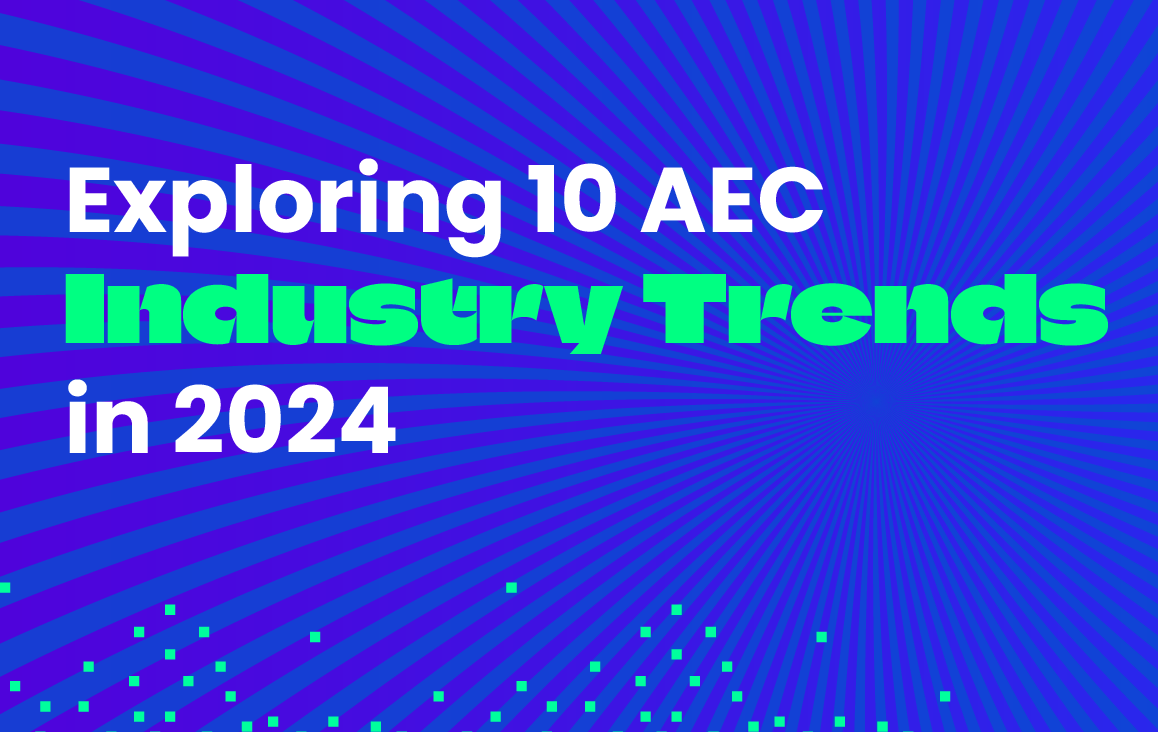Maximizing Efficiency with Digital Twins in Construction Projects

In the rapidly evolving AEC industry, the advent of digital twin technology marks a significant leap forward. This cutting-edge concept, integral to the latest AEC industry trends, introduces virtual replicas of construction projects, revolutionizing how architecture, engineering, and construction professionals approach their work. This article explores the transformative impact of digital twin software in construction, revealing how these technological marvels redefine design, construction, and project management practices.
The Role of Digital Twins in the AEC Industry
The concept of a digital twin in the AEC industry is more than just a buzzword; it's a paradigm shift in how construction projects are conceived, executed, and managed. Digital twin software creates a dynamic digital representation of a physical construction project. This mirror image, alive in the virtual world, is continuously updated with data from the real world, ensuring an accurate real-time reflection of the project.
In the realm of AEC industry trends, the integration of digital twins stands out for its ability to bridge the gap between the physical and digital worlds. By employing this technology, professionals can simulate, analyze, and test scenarios in a virtual environment before implementing them in the real world. This foresight is invaluable, as it reduces the risk of costly mistakes and unforeseen complications.
The role of digital twins goes beyond mere visualization; it encompasses the entire lifecycle of a construction project. From the initial design phase to the final construction and even into the maintenance and operation stages, digital twins offer a comprehensive view of a project's progress and potential future outcomes.
Benefits of Digital Twins in Construction Projects
Real-Time Insights for Efficient Decision-Making
One of the foremost advantages of digital twin software in the AEC industry is its capability to provide real-time insights. With continuous data flow from the physical construction site to its digital counterpart, decision-makers can monitor progress, identify issues, and implement solutions promptly. This immediacy allows for more efficient project management, reducing downtime and enhancing productivity.
Refinement of Designs and Anticipation of Challenges
Another key benefit of digital twins in digital twin construction projects is the ability to refine designs before physical implementation. Engineers and architects can anticipate potential challenges and rectify design flaws by simulating different scenarios and outcomes in a virtual environment. This proactive approach not only improves the final construction's quality but also helps avoid costly reworks.
Cost Reduction and Overall Project Efficiency
Implementing digital twin technology leads to significant cost reductions in construction projects. By optimizing design, streamlining project management, and reducing the likelihood of errors, digital twin software contributes to a more efficient use of resources. This efficiency impacts the immediate costs and contributes to long-term savings in maintenance and operation.
Case Studies: Digital Twins in Action
Conclusion
Implementing digital twins in the AEC industry represents more than a technological advancement; it signifies a revolutionary shift in how construction projects are planned, executed, and maintained. As these virtual replicas become more integrated into the fabric of the construction process, they promise to drive efficiency, reduce costs, and enhance the overall quality of projects. The future of the AEC industry trends is undeniably intertwined with the evolution of digital twin construction technology, positioning it as a cornerstone for modern architectural and engineering practices.


